Termiply® by FA Mitchell is premium termite-resistant plywood, specially crafted to protect projects from Australia’s most destructive wood-eating pests. This durable, cost-effective solution safeguards new builds and renovations alike, offering reliable termite defence.
As a trusted supplier in Sydney and throughout Australia, we design Termiply® to meet the nation’s strictest building standards with lasting quality and sustainability. Backed by EWPAA certification and sourced from sustainably managed plantations, Termiply® delivers robust termite protection in an eco-friendly plywood solution.

Termiply®: Reliable and Cost-Effective Termite Protection
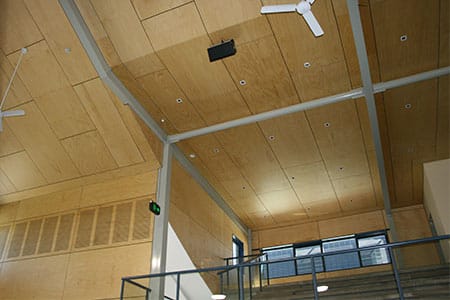
Termites are a major source of property damage in many parts of Australia. Thus, whether you’re designing a new building or renovating, termite-resistant construction materials are essential. Otherwise, you and your clients could face enormous future repair costs that aren’t always covered by insurance.
However, not all termite-resistant materials (such as steel, aluminium, stone, concrete or treated lumber) may meet your technical requirements or budget constraints.
Termiply® could be the solution for you. Our termite-resistant interior plywood offers you protection from both long-term structural damage and costly repairs.
How Termiply is Made
Termiply is expertly crafted through a combination of these steps:
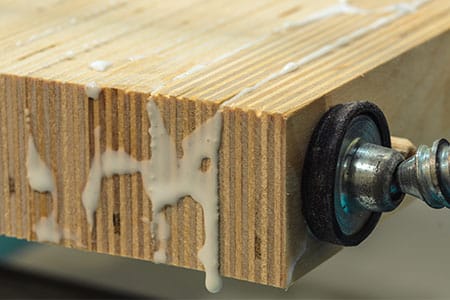
- Careful Veneer Selection and Preparation: For Termiply, we typically use veneers from Hoop Pine, Cypress Pine, and Blackbutt (for their inherent strength and compatibility with anti-termite treatments). These veneers are dried and treated with formaldehyde-free preservatives.
- Assembly: The treated veneers are glued together using moisture-resistant adhesives, such as phenolic or melamine “Type A” resins. This prevents the ingress of moisture, which termites thrive in.
- Anti-Termite Chemical Treatment: Furthermore, the veneers are treated with termite-resistant chemicals, before and after the plywood is assembled:
- Impregnation Treatment: Before assembly, chemicals are impregnated into the wood veneers, allowing deeper penetration and more effective protection.
- Pressure Treatment: After the plywood veneers are glued together, they are placed in a vacuum chamber and chemicals are forced into the outer layers of the wood. This process, known as “envelope treatment,” further protects the plywood’s surface and edges (but may not penetrate the core).
- Edge Sealing: Finally, to further enhance the plywood’s resistance, edges are sealed with termite-repellent resins, providing additional protection where termites might try to enter.
The result is a sturdy, durable interior plywood that is environmentally sustainable, has zero formaldehyde emissions, and meets Australia’s H2 hazard level standards.
What are Australia’s H Codes?
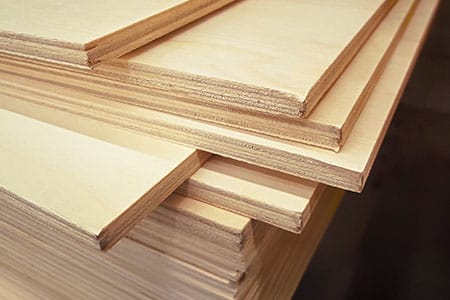
Australia’s H Codes are hazard treatment codes that classify timber treatments for biological threats, such as termites and decay. These codes range from H1 to H5, each representing a different level of protection:
- H1: Protects timber and wood products from non-termite insects in above-ground applications.
- H2: Provides termite resistance for above-ground timber and wood products used in well-ventilated, protected environments
- H3 to H5: Offer progressively stronger treatments to protect timber exposed to weather, in contact with soil, or submerged in water.
Termiply’s Compliance with H2 Standards
Termiply interior plywood is treated to H2 standards, the minimum level of treatment needed to protect plywood from termites in interior, above-ground applications. This makes it an ideal choice for inner walls, ceilings, bracing panels, and sheltered semi-exposed features such as eaves or soffits. This means you can minimise vulnerability to termite attacks even for the smallest architectural detail.
Premium Australian Wood For Stylish Termite-Resistant Plywood
Australia is home to various native and locally-grown wood species that are ideal for producing termite-resistant plywood. These species are famous for their strength, durability, and suitability for both structural and decorative applications. They are a natural choice for our Termiply brand and other plywood sheets that effectively absorb anti-termite treatments.

- Hoop Pine: A popular softwood with a fine grain and consistent strength, Hoop Pine is known for its versatility. It responds well to termite treatments, making it an excellent choice for interior linings, bracing panels, and other protected applications.
- Cypress Pine: Naturally termite-resistant, Cypress Pine offers built-in protection without requiring heavy chemical treatments. Its durability and resistance to decay make it ideal for structural applications where pest control is a priority.
- Ironbark: Renowned for its extreme hardness and natural resistance to termites, Ironbark is a preferred choice for heavy-duty applications. This hardwood offers high durability, making it suitable for outdoor or exposed environments with elevated termite risks.
- Blackbutt: Another highly durable Australian hardwood, Blackbutt is naturally resistant to termites and often used in both interior and exterior plywood applications. Its strength and stability make it an excellent material for high-exposure conditions.
- Spotted Gum: Known for its toughness and density, Spotted Gum is a favoured material in Australian construction. Its natural resistance to termites, combined with its aesthetic appeal, makes it ideal for plywood used in both structural and decorative applications.
These high-quality timber species don’t just provide an effective foundation for termite prevention. They lend a natural beauty to plywood that rivals more expensive pure wood or lumber.
The Benefits of Choosing Our Termite-Resistant Plywood
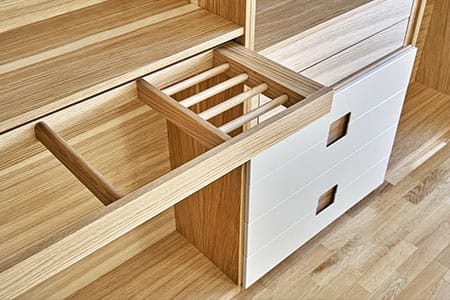
Termiply provides more than just termite protection. It seamlessly integrates with construction methods, ensuring full coverage of potential entry points like joints and utility openings. By incorporating Termiply into your design, you reduce reliance on complex maintenance systems or chemical treatments. When used as part of a multi-layered termite management strategy, Termiply ensures long-lasting defence against termite damage for all your projects and properties.
General Features of Termiply®
- High Quality Termite Defence: Certified by the Engineered Wood Products Association of Australasia (EWPAA).
- Sustainable & Local: 100% sourced from Australian plantations.
- Versatile Use: Perfect plywood for interior linings, ceilings, walls, and other indoor to semi-indoor features
- Natural Beauty: All the warmth and appeal of Australian wood at a lower cost
Best Applications for Termite-Resistant Plywood
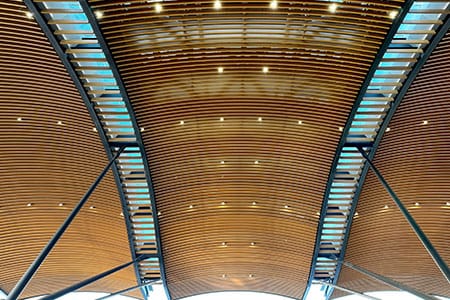
For architects and developers, Termiply’s versatility and durability open up opportunities for adding termite protection in various settings. Here are just a few examples of where our clients have used Termiply:
- Residential developments: for living areas, bedrooms, storage, patios, etc.
- Commercial buildings: shops, mall promenades, office lobbies, conference rooms, work cubicles, etc.
- Public buildings and spaces: airports, metropolitan transit stations, theatres, courtrooms, and museums
- Schools: sports gyms and classrooms
FAQs

1. Can Termiply be used for exterior applications?
Termiply complies with H2 standards and is designed for interior use. However, it can be safely applied in sheltered exterior areas, like eaves or soffits, provided a sealing solution is applied.
Note: If you need H3-level protection for fully exposed outdoor conditions or occasional wetting, we recommend combining exterior or marine plywood with termite-resistant treatments to provide a robust solution.
2. How long does the termite protection last?
When used appropriately, Termiply’s termite resistance can last for at least 10-15 years. For the best results, especially in termite-prone areas, have regular inspections conducted.
3. Is Termiply environmentally friendly?
Yes! Termiply veneers are from certified local Australian wood plantations and consistently gain a zero formaldehyde emission rating. That makes it a sustainable choice for environmentally conscious projects.
4. What’s the best way to minimise termite damage to properties in Australia?
To effectively reduce termite damage, it’s important to incorporate termite management solutions directly into the construction process.
Choose termite-resistant building materials like Termiply plywood, treated timber, concrete slabs, or steel frames. Wherever necessary, combine them with additional protective elements, such as membranes, collars, foams or sealants.
Your architects, interior designers and construction teams must work together to address all possible termite entry points (e.g., gaps in concrete slabs, brickwork, and areas where utilities pass through). They must ensure your project complies with Australian Standard AS3660.1 for termite management. (Note: compliance will require regular inspections and upkeep to remain effective.)
Get a quote on Termiply termite resistant plywood today!
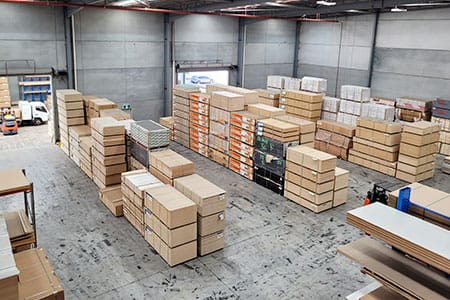
At FA Mitchell, we take pride in delivering high-quality, termite-resistant plywood to projects across Australia. By choosing Termiply, you are investing in a product that not only offers superior protection but also supports sustainable Australian forestry.
Like all our plywood products, we source our Termiply from creditable plantations across Australia. The Engineered Wood Products Association of Australasia (EWPAA) audits our products without exception and they meet the toughest Australian standards, including the zero formaldehyde emission rating test.
Get a Quote for Termite-Resistant Plywood
We supply Termiply throughout New South Wales and the rest of Australia from our Sydney warehouse and sheet cutting facility. To receive personalised advice and a competitive Termiply quote for your next project, call us at (02) 9646 2777 or complete the form below. Our plywood experts will assist you as soon as possible.


